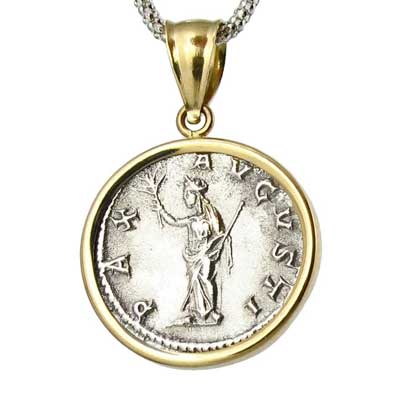The Story of the Olive Branch
Wednesday, January 25, 2017 9:57:30 AM America/Los_Angeles

In today’s age of political division you will occasionally hear a politician offering to “extend an olive branch” to the opposition. This symbolic act of making peace with an olive branch goes back through history to the ancient Greeks and Romans. In the Bible, as told in the book of Genesis, Noah released a dove from the ark which later returned with an olive leaf in its beak. This told Noah that the flood had subsided, conflict had ended, and the time to leave the ark had arrived. Brides in ancient times wore a wreath of olive leaves around their forehead on their wedding day and Olympic champions were awarded a crown of olive leaves to celebrate their victory.
Many of the deities pictured on ancient coins including Pax, Virtus, and Mars are shown holding an olive branch. These offerings of peace showed a desire to end conflict. Even Mars, the god of war is often depicted with a spear in one hand and an olive branch in the other. During the Pax Romana, a period of over two hundred years of peace, the Romans felt peace was best obtained with a strong military to dissuade their enemies from starting a conflict. The Roman god Virtus was often depicted with an olive branch, as a virtuous man led a moral life and lived up to standards set by his relatives. The olive branch signified a willingness to end those conflicts in life that would conflict with maintaining inner peace.
Even today the symbol of the olive branch survives, incorporated into the Great Seal of the United States, on various state flags, and on the reverse side of many of our coins.
Michael Ferber
You must be logged in to post a comment.
click here to log in




